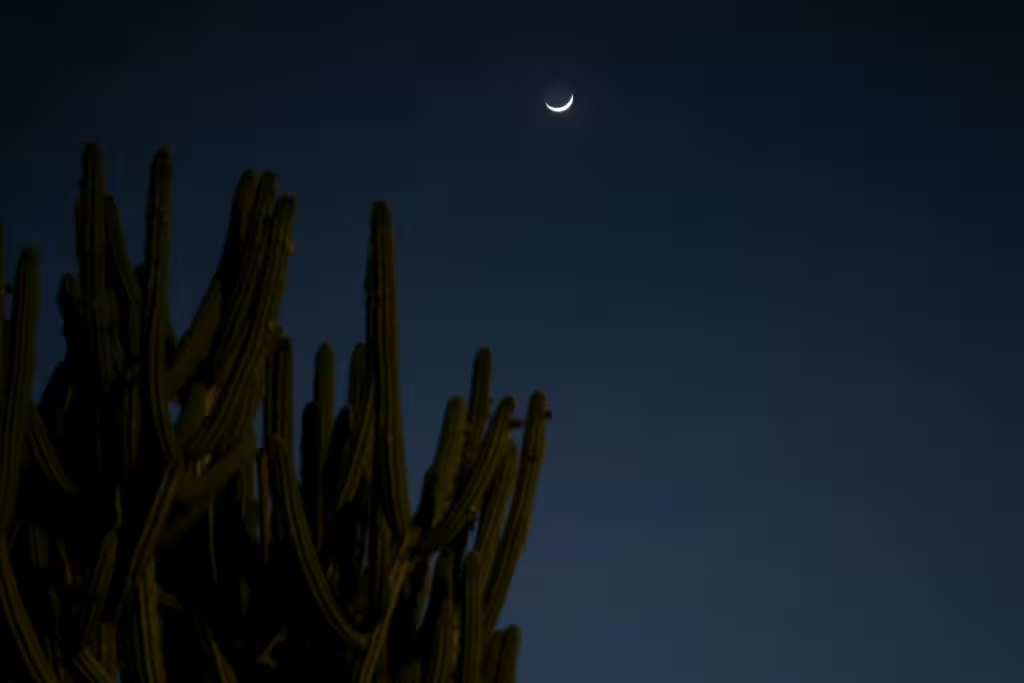Today, we take a break from our study of animal parenting to discuss the mobility of plants. This concept will seem off to some, no doubt, as we have become accustomed to the idea that for all their adaptations, plants are essentially stationary beings. And certainly many of us have heard about plants that “grow towards sunlight” when left propped in darkened areas, but does this life-preserving behavior (known as phototropism) count as mobility in our estimation?
It’s hard to say, really. Plants, by nature of their very existence, are traditionally associated with stillness. This makes perfect sense as even those plants that don’t root themselves directly into soil, still manage to find purchase in other ways. They sit, wherever they have managed to root themselves, soaking up sunlight and water and watching the world move around them.
The truth is, this image isn’t entirely accurate for all plants. Even without having wings, legs, or fins, some plant species have evolved ways to crawl, hop, or even walk towards their desired plot of land; and it those plants that we are here to discuss.
In this article, we’ll take a journey across the globe to discover the most unusual and eerie plants on the planet. As we traverse from desert to rainforest and even deep into the ocean, we will investigate how a handful of botanical wonders have adapted past their normally stationary limitations to become true movers and shakers.

Walking Palms
We begin our journey with one of the most famous (and debated) examples of a “walking” plant. Socratea exorrhiza, also called the Walking Palm, can be found in the tropical rainforests of Central and South America. The interesting thing about this plant has to do with its unusual, stilt-like root system, which fans out from the base in a cone shape. People liken this unique root system to the legs of an insect and many locals believe that the aptly-named plant can actually walk by growing new roots. Those roots grow in the direction of the best sunlight and as the plant “moves” the old roots die off. The result is that, over time, it appears as though the walking palm is moving across the forest floor.
The verdict on whether or not the walking palm is actually moving is “still out,” as they say. Scientists remain skeptical about actually categorizing the plant as a truly mobile organism, but that doesn’t stop it from being a visually-enticing example of plants leaving their old ecosystem, pulling up roots, quite literally, to move on to greener pastures of their own making.
A Jumping Cactus?
In the deserts of the American Southwest, there lives another legend of the botanical world. Cylindropuntia fulgida, sometimes called the wandering cactus, cholla cactus, or the jumping cactus, has evolved a truly remarkable way of spreading its seeds and self across large swaths of difficult terrain, all without the use of actual, transportive appendages.
The wandering cactus is covered in segmented stems covered in barbed spines, which are loosely attached to one another. As a result, these segments can, and often will, detach at the slightest brush—often latching onto the fur of passing animals or the clothing of unsuspecting hikers. In essence, part of the cactus “jumps” onto another animal and “wanders off” to another nearby habitat. You can see where the name comes from now, we take it? It should also be noted that some unfortunate individuals have given the cactus the moniker “devil cactus,” as getting one stuck on you hardly feels like picking up a harmless hitchhiker.
Once that wandering segment drops off elsewhere, it can take root and grow into a new cactus. For those who are not aware of this adaptation, such as passers by or early nomadic peoples, it might even appear as though the cactus is migrating across the landscape, leaving a veritable relay of detached, discarded stems in its wake. This movement is generation, so it would be a stretch to call it a mobile plant. That said, the dispersal method is a remarkable way for a stationary plant to spread across an arid region, where water is scarce and traditional germination methods are risky at best.
Oh So Sensitive
Some plants are more sensitive than others and no, we don’t mean that as a euphemism. We are talking about the Mimosa pudica, colloquiately known as the sensitive plant. This plant is famous for its ability to move in real time, meaning, it is completely visible to the human eye. This is opposed to the previous mentions on our list, which seem to only move over the course of generations of time.
The feathery leaves of the sensitive plant are where the “movement” actually occurs. Touch one and it will instantly fold inward and droop. This reaction, a defense mechanism the plant uses to deter herbivores, is meant to be as startling as it seems. Heat, vibration, and other assorted stimuli will cause the leaves to wilt as well.
How does this movement happen, you may ask? The answer is microscopic. Pulvini, which are specialized cells at the base of each leaflet, can rapidly alter their internal water pressure. This process is known as turgor change and its alteration can cause the leaf to fold in and collapse on itself. It should also be noted that other plants have the same rapid “reflexes,” though they use them to draw in prey, rather than avoid becoming a meal themselves. We are speaking, of course, of the venus flytrap and other carnivorous plants.
Carnivorous Plants
Students of botany were likely holding their breath awaiting this particular entry. Indeed, few plants demonstrate deliberate motion as dramatically as the Venus flytrap (Dionaea muscipula) and its carnivorous relations. The flytrap itself tends to make its home in nutrient-poor bogs and swampland in the southeastern United States. To combat its lack of nutrients in the soil, flytraps and other carnivorous plants supplement their “diets” with insects, which they capture using rapid-motion traps.
It works like this; when an insect touches the trigger hairs inside the Venus flytrap’s leaves, the lobes of the plant snap shut, trapping the bug inside. This action can happen in under a second and once the hairs touch, it begins to seal ever tighter. Eventually, the plant releases digestive enzymes that enable it to break down the prey into nutrient-rich sludge. A few days later, the trap reopens and the plant is ready to feed once more.

Dancing Plants
Did you know that plants can dance? Well, if they want to and if their name happens to be Desmodium gyrans. Otherwise known as the Dancing Plant, this botanical marvel isn’t just capable shifting its roots or folding its leaves but can visibly move in real time. Native to Southeast Asia, this plant is actually a legume. It also happens to be possessed of small lateral leaflets that rotate or “dance” in response to various stimuli; namely those that plants require, such as light, temperature, and very often, sound vibrations.
Interestingly enough, the dancing plant is one of the few plants that physically appears to respond to music and sound frequencies with enhanced leaf motion. It should be noted, however, that this phenomenon is still highly debated and not fully understood by the scientific community at large.
Seaweeds and Swampweeds
Finally, we leave the boundaries of land and head into the sea…well, the coast, to be exact. Coastal plants, such as seagrasses like Zostera marina don’t move under their own power, but are moved thanks to the tides. The Zostera has buoyant, ribbon-like leaves which can shift dramatically with water currents. So, yes, it does move, though it is hardly under its own power. The same is true for floating plants like water hyacinths Eichhornia crassipes whose roots are not anchored to the ground. Entire mats of these plants have been known to drift across ponds, rivers, and lakes in rainy seasons, colonizing new areas wherever they eventually find themselves.
True Investigator Says…
As you can see, many plants are able to react, move, and shift in ways that most people never imagines. We’re not trying to fool anyone, we understand that mobility has a pretty overt meaning, but as scientists, it is up to us to try and re-define certain things by looking at them through different lenses. They may not move with muscles like members of the animal kingdom, but their methods of movement are ingenious and remarkable, all the same.
Discover more from TrueInvestigator
Subscribe to get the latest posts sent to your email.


